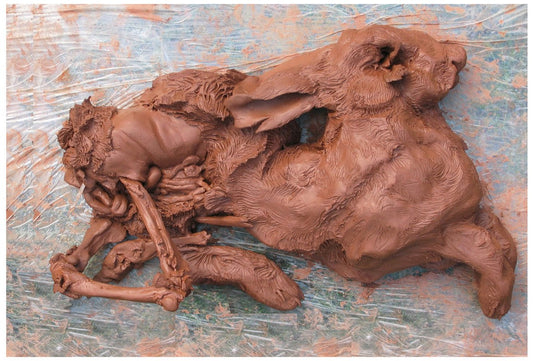Gargoyles are architectural stone statues depicting mythological winged creatures. They are typically viewed as grotesque and chilling statues, outfitted with unfriendly wings and horns. Gargoyles look down menacingly from their perches atop cathedrals, fortresses, and castles. According to Jackie Craven from Thought Co., gargoyles represent a jarring hybrid of “monkeys, devils, dragons, lions, griffins, humans, or any other creature.” Gargoyles have been used as key architectural ornaments for centuries, but despite their largely historical use, they’ve made a lasting impact on contemporary pop culture and literature.
Gargoyles fulfill a greater purpose beyond their imposing visual presence. Practically speaking, they “serve an architectural purpose” as waterspouts designed “to throw rainwater away from a building.” The technology of waterspouts saw more widespread use “toward the end of the Romanesque architectural period.” According to Kelly Richman-Abdou and Margherita Cole, “the water passes through the pipe-like stone structure, and then dramatically cascades out of the creature's open mouth.” The gargoyles were designed to project the rainwater as far away from the façade of the building as possible, so the architecture below wouldn’t get damaged. Richman-Abdou and Cole elaborate that “gargoyles are typically horizontally-oriented” for this reason. Famous gargoyle-laden sites include the Ravenwood Castle, the Laon Cathedral, and the Notre-Dame Cathedral, where viewers can take in an array of these grotesque yet protective statues.

Believe it or not, gargoyles first appeared in ancient Egypt. Similarly to the gargoyles of the European Gothic tradition, Egyptian gargoyles were placed atop roofs of temples, and “they were likely installed to keep the temples safe from the vengeful rains of Seth, a god associated with chaos.” Rather than serving as waterspouts, the gargoyles in Egypt were utilized as symbols of protection from unwanted gods. Jackie Craven further wrote, “The oldest gargoyles have been found in present-day Egypt from the Fifth Dynasty, c. 2400 B.C.” These statues typically had the head of a lion, like a griffin. While not serving a practical purpose, these gargoyles provided spiritual protection for the ancient Egyptians.
Gargoyles additionally have been symbolic components of classic literature. They appeared in the 1831 novel The Hunchback of Notre Dame by Victor Hugo and the 1983 short story Cathedral by Raymond Carver. Both authors dedicate a portion of their stories describing gargoyles, depicted as monstrous statues atop cathedrals. Hugo wrote, “The other statues, those of monsters and demons, had no hatred for him - he resembled them closely for that. It was rather the rest of mankind that they jeered at. The saints were his friends and kept watch over him; the monsters were his friends and kept watch over him. He would sometimes spend hours crouched before one of the statues in solitary conversation with it.” Hugo identifies gargoyles as monsters and demons but as friendly contemporaries of Quasimodo, whom they watch over. Meanwhile, Carver wrote, through his narrator’s point of view, “They’re showing the outside of this cathedral now. Gargoyles. Little statues carved to look like monsters. Now I guess they’re in Italy.” Here, the narrator watches a television program that features gargoyles and sees them as menacing wards of the cathedral, a more traditionally Gothic interpretation of the statues. Though depicted differently, both writers recognized the inherently protective nature of gargoyles.
In contemporary film representations, gargoyles have been portrayed differently than both Egyptian and Gothic conceptualizations. Gargoyles have appeared in many films such as Gargoyles (1972), Gargoyles the Movie the Heroes Awaken (1995), Gargoyle: Wings of Darkness (2004), and Rise of the Gargoyles (2009). The gargoyles depicted in the films pay tribute to the medieval stone statues in Gothic architecture. Still, they are also seen as evil-winged creatures that come to life and terrorize the local community. However, in Disney’s adaptation of Hugo’s The Hunchback of Notre Dame (1996), the anthropomorphic gargoyles befriend Quasimodo, providing comfort to the ostracized man. Throughout the film, the friendly gargoyles mention how they’re made of stone and “just part of the architecture.” Unlike most other cinematic depictions, the animated gargoyles of Notre Dame are not grotesque or creepy.
Gargoyles, though represented famously as dark, Gothic sentinels perched atop European cathedrals, possess additional unheralded cultural and architectural values across different eras and cultures. They embody the artistic principle that a second look often yields a deeper understanding and appreciation for works whose meanings are often taken for granted.








